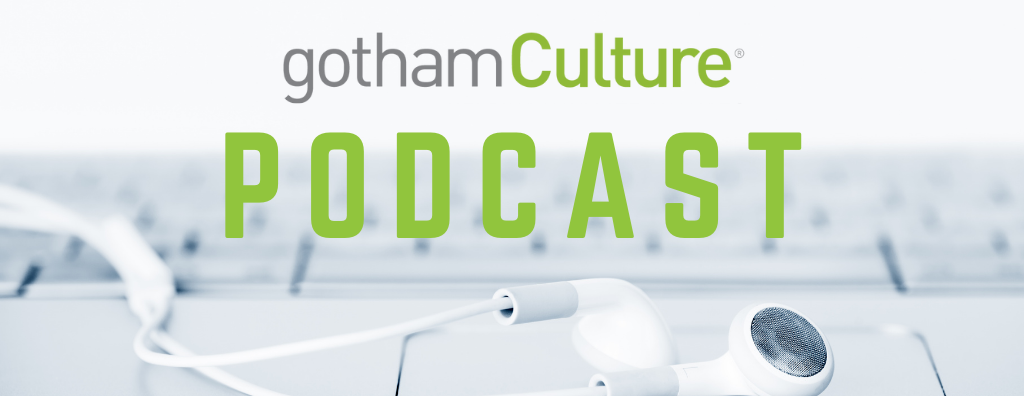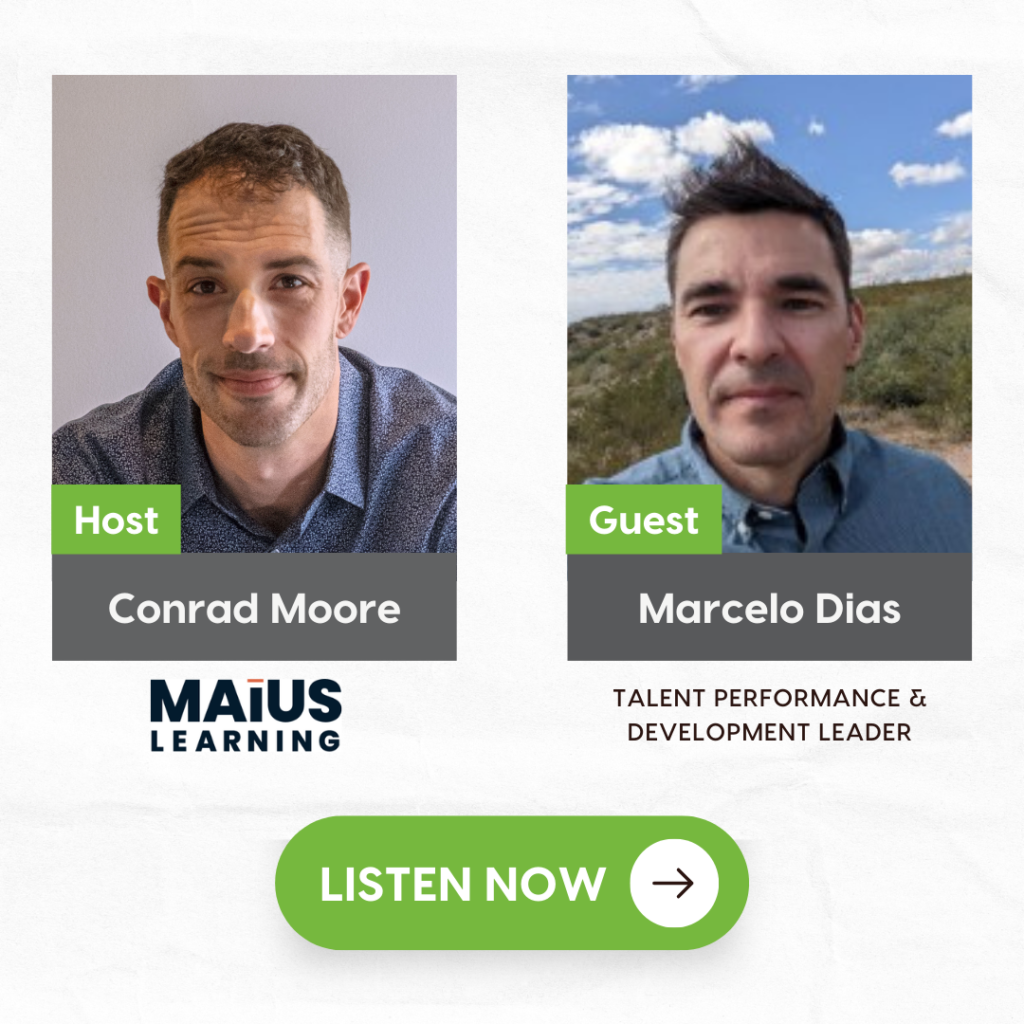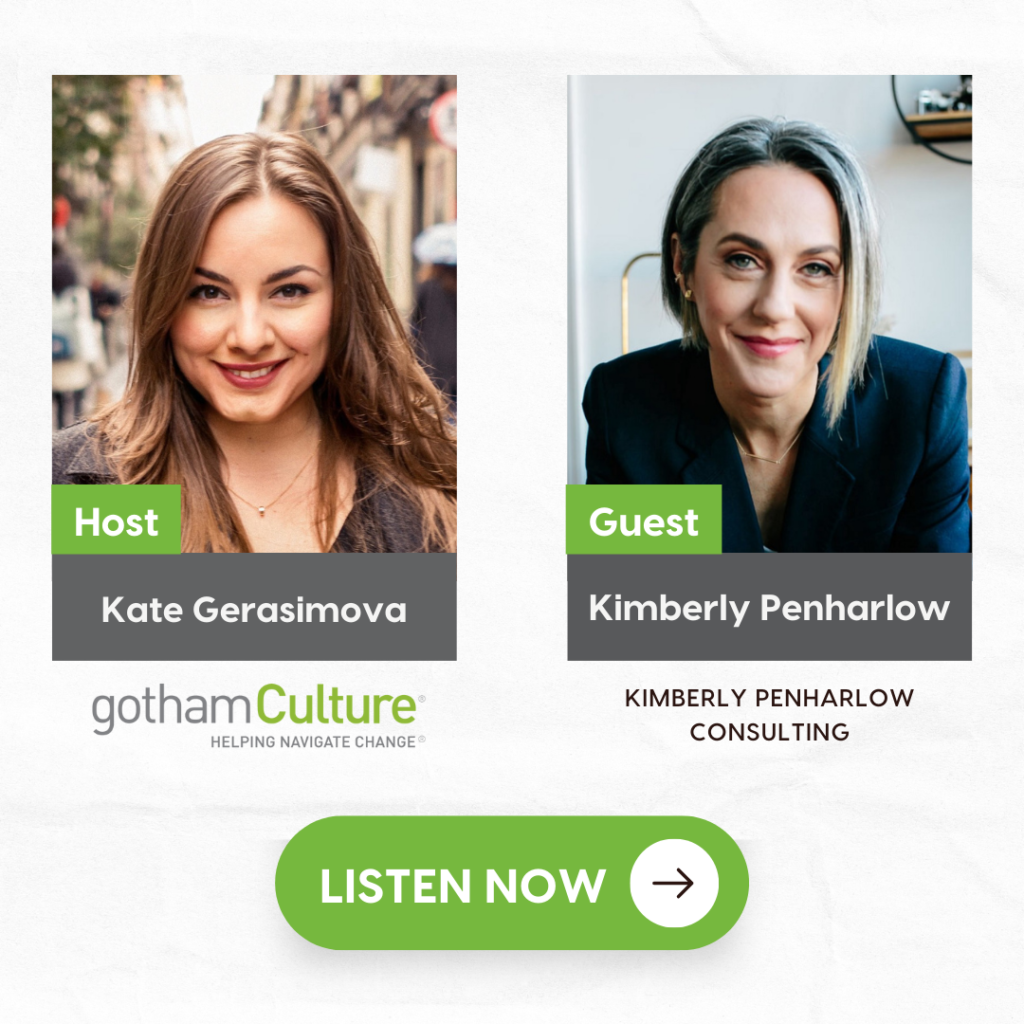Kate Gerasimova:
I’m happy to present to you a series of episodes about culture gathered over the past year, asking experts in the industry for their advice and recommendations for leaders of organizations in this always changing environment. The three episodes touch on how organizations need to be resilient in this vulnerable times. Each guest has a unique background and brings their own expertise and experience to what organizations, leaders, and employees need to do to be successful.
Kate Gerasimova:
Hi, my name is Kate Gerasimova and I’m a host for today’s podcast. Here I am joined by our guest, Brooke Rufo Hill, head of People and Culture at RippleWorks. RippleWorks Foundation brings the practical support social ventures need to scale faster and improve more lives. Brooke, thank you so much for being here.
Brooke Rufo-Hill:
Kate, thanks so much for having me. I’m really looking forward to the conversation and I’m excited to talk about a topic that is near and dear to my heart and something that has been incredibly inspiring and motivating to me in my first six months with RippleWorks. So thanks so much for having me.
Kate Gerasimova:
That’s wonderful. Well, today, the big surprise, we’ll be speaking about how leaders can show up with a learner’s lens versus performance lens. Generally speaking, the learning organization is a concept first described by Peter Senge as an organization where people continuously learn and enhance their capabilities to create. So Brooke, in your experience, what does a learning organization look like?
Brooke Rufo-Hill:
Well, I think something that our CEO, Doug Galen recently shared really articulates this well. He talked about, at a recent company meeting, that in a learning organization we focus on improving everything instead of proving anything. So I’ll say that again, improving everything instead of proving anything. And at first it just kind of rings as a nice little slogan, but when you really start to think about what the kind of core message is in that phrase, there’s actually a lot of unlearning that is required and encapsulated in that slogan that helps to lead us towards wholeheartedly becoming a learning organization.
So when I think about learning organizations, maybe it’s a bit obvious, but learning, and maybe the new pieces and unlearning, is absolutely at the center of all that we do. One example of this might be, at my current organization, we are in the process of really moving away from a more traditional performance management context and moving towards a learning and growth framework where you no longer need to try to prove anything to yourself or your manager or anyone else, but instead, when you enter into these twice a year conversations with your people manager, it is really about focusing on improving everything, and getting into an open and honest conversation with your manager as a partner around progress and ongoing or future opportunities related to learning and growing and acquiring additional skills.
Another example of this in our organization is that when new hires join, and all of us have been new hires at different points in our career, we often feel, when we join an organization, like we need to prove something. And so one of the things that we’re actively encouraging all of our new hires to partake in from an unlearning standpoint is to really embrace a learner’s mindset rather than a performance mindset from day one. So actually this morning I was with a group of new hires and doing an onboarding training as part of their kind of first month with us at RippleWorks. And one of the things we talked about is listen, we have an understanding within our organization that you absolutely have what it takes to do the job you were hired for. That is why we selected you through the hiring process and brought you into this role.
So please set aside this need to prove that you have every right to be here doing the work, sharing in the work with us, and instead just embrace from day one this mindset and focus that is all about improving and not proving.
Couple other quick things I’ll offer around a learning organization with maybe a bit more concrete examples from our organization is that in a learning organization, everyone is regarded as both a teacher and a student. And this really does not matter or depend on your tenure in the organization, the number of years you have in your career, the job level that you are at. There’s really this shared belief that no one ever fully arrives and we all have something to learn and teach one another.
And the final thing I’ll mention, we are also kind of actively going through this unlearning within our organization, is that while of course experimentation is encouraged, and this idea of not overthinking things and really testing and learning, so doing experiments all over the place, one of the kind of concrete outputs of that is that we as an organization are moving towards more wholeheartedly embracing this idea of iterating in public. So no longer kind of doing all of this design at the whiteboard by ourselves or within the team, but rather starting to iterate out in the open.
And a really simple way to do that is as we are coming up with ideas, crafting projects, crafting proposals, rather than kind of the disclaimer that we all feel a bit more comfortable is when we put a WIP in the title of the doc, that means work in progress. A commitment that we’ve recently made is that we will be removing work in progress from all the docs, because if we are trying to create and really shape an organization where iteration is embraced and this idea that really we never fully arrive and the work is never over, then there really isn’t a need for a label such as WIP. So Kate, those are just a few examples around learning and unlearning and this idea of a few hopefully practical examples of what you might see in a learning organization.
Kate Gerasimova:
That’s wonderful. Thank you so much for sharing those practical steps and you’re definitely changing a lot of behaviors there. Well, in preparation for this conversation, I also did some research and I came across the Harvard Business Review where David Garvin was saying that the rate an organization is learning is the only sustainable factor for organizations these days. So my question to you is really what needs to be in place to continue learning as an organization?
Brooke Rufo-Hill:
Yeah, great question. I think of these as the ingredients in a recipe for an organization that is striving to create a culture of continuous learning and really establish themselves as a learning organization. So a few things, and I’m sure the listeners will have other ideas, but a few core things that I have found to be critical are one, first and foremost, psychological safety. And there are a lot of different definitions out there of what we mean by this. And I think the most kind of simplistic but poignant way to describe this that’s really stuck for me is employees need, and all team members, again, regardless of how long they’ve been in the organization, their level, et cetera, really need to believe and feel in their bones that they can make mistakes without retribution. That I can put myself out there, try something new, not do it perfectly the first time, maybe even make a big mistake, and that I will be given grace around that, and that I’ll be supported in the learning that can come out of that mistake. So psychological safety’s a big one.
Okay, so a second ingredient, I would say, that is absolutely critical to building a learning organization or creating a culture of continuous learning, is a culture of continuous feedback. Feedback is absolutely our greatest tool to help facilitate not only our own growth by asking for feedback, but also certainly as leaders and people managers, it is the greatest tool we have to help our people and other colleagues learn and grow.
A third critical ingredient is, we’ve talked a little bit about this, but it’s really beginning to understand and frankly honor the role that unlearning plays in learning new ways of doing and being, in the workplace or frankly anywhere in our lives. And another kind of more practical way to think about this is in order to be convinced to try something new or to do something in a different way, I have to really understand that why what I have learned previously, or the narrative I hold in my head based on previous learnings, is no longer serving me or the organization. So that’s really kind of one of those first critical steps in understanding how unlearning plays such a significant role in the learning that we are striving to achieve, both for ourselves and for our teams.
And finally, I’d say one additional ingredient critical to learning within an organization is really creating a culture that celebrates mistakes and the lessons learned from those mistakes, and ensuring that that mindset and that practice are integrated into the fabric of the company. And when I say the fabric of the company, I’m talking about not the things that happen once or twice a year, but those daily or weekly rituals, practices that we have, within our organizations. So anything from team meetings to company wide meetings to presentations or fireside chats done by leaders. When we think about what gets rewarded, how are we compensating people, what are we celebrating, maybe through formal awards programs, how do we bake learning into our projects by creating post action reviews or moments to pause and debrief and to collectively learn with one another?
So those would be the four things I’d say, Kate. Psychological safety, culture of continuous feedback, understanding the role unlearning plays in learning, and finally, celebrating mistakes and the lessons learned.
Kate Gerasimova:
This is great. And while the organizations have these all four components and is continuing being a learning organization, I’m curious how do you measure the success so you know that you’re continuing being that organization, whether it’s on an organizational level or at the individual level?
Brooke Rufo-Hill:
Yeah, it’s a great question and this is kind of the hump, I think, some folks need to get over when they think about doing something outside of the box. The example I gave earlier was kind of moving away from a more traditional performance based culture and systems of performance management, where we’ve learned one way to measure success. And so how, I would say, in a learning culture, or where we are really putting learning at the center of all we do, I’d probably change the word success to progress, because what we’re actually measuring is not the ultimate accomplishment, but where someone is within a continuum of growth in their current job level. So for instance, within our organization, we have within each job level, there are three growth milestones and we articulate those as exploring, delivering, and mastering. And at first glance you might think like, ah, that’s just another way of articulating performance ratings, but it’s not.
And we’re really clear about this with employees and talk about how what this is measuring is not the output, and what they are being invited in these learning and growth cycles, and learning and growth conversations with their managers to focus on, it’s not coming in with a proving mindset where I have to show you and tell you about all of my accomplishments, all of the outcomes, everything that was kind of the end result, but rather it’s quite the opposite of what many of us have learned professionally growing up in a variety of organizations where, where we focus is more on the inputs and the process itself. And so great, it’s understood you’ve accomplished these things, but how did you get there? What has been that learning progress over the past six months? What are the skills that you either have built that have progressed or maybe new skills that you’ve begun to acquire?
And then ultimately for us, in lieu of a performance management system with ratings, we leverage these growth milestones as a way to both celebrate kind of the incremental growth along the way, as well as then we tie our compensation framework to these growth milestones. So in essence, the more you learn within our organization, the more you earn. And what makes this fundamentally work for us is that we have an inherent belief that if we focus on the learning and growth of employees in ways that are relevant to the work that they are doing, to the mission of the organization, that the performance will take care of itself. That if people are engaged, if they are growing and learning and acquiring new skills, that then that will translate into the impact that we are hoping to deliver, in our case to social ventures that are out doing incredible work in the world and improving lives.
Kate Gerasimova:
Well that’s wonderful, Brooke. Honestly, RippleWorks sounds like a really innovative organization with the practices that you’re doing, so thank you for sharing all of them. Brooke, one of our podcast guests has asked, what can leaders do in their environment? Meaning, what can leaders do tomorrow to move towards more of a learning organization?
Brooke Rufo-Hill:
I love this question because when we think about what can you do differently tomorrow, it feels highly practical and very actionable, which is something I feel like we’re always striving for. So yeah, maybe just a few things, a few suggestions. One encouragement or nudge I would give is really starting with yourself, start to reframe feedback. I think we all know that feedback, in many cases kind of comes with a lot of baggage for folks. And often we hear feedback described as either good or bad or positive or negative. And so the reframe that I would offer you to kind of try on for size and kind of squirrel around in your head a bit is this idea that it’s all positive and good. All feedback regardless of if it’s reinforcing feedback where you’re telling someone that was amazing XYZ and I want to see more of that.
Or if it’s more developmental where you’re pointing out where maybe someone’s behavior had some unintended negative consequence on someone or impact, and here’s what they might do differently. So I think there’s this reframe and an opportunity around feedback that really all feedback is positive because it is the greatest tool we have, and the gift we can give to each other is to help them grow. Of course, as long as it’s done with kindness and with care. So that’s one I think reframing feedback.
A second one is something we talked about earlier in terms of an ingredient, or what you might see in a learning organization, is this invitation to see every person in your workplace, regardless of their age, tenure position level, as having something to both teach as well as something to learn. And so I think it is seeing the youngest employee or the newest employee in your workplace as having something to teach and learn just as much as your most senior leaders, your CEO.
And it almost works in reverse when we think about senior leadership. And frankly, for many of us may provide a bit of relief in this idea that if we never fully arrive, no matter how much knowledge, experience we amass, there is always something for us to learn. And so kind of just seeing that in others and honoring that and all the folks you work with.
A third opportunity I would say that you could start tomorrow is really as leaders, and in your leadership role, getting into the practice of being the first one to acknowledge when you don’t know what to do, or you actually don’t know something, or you see an opportunity for you to learn something. Probably goes without saying, and I think in our minds, we all know that this is a helpful thing to do that it really invites, then, others, especially when this is coming from someone in a position of leadership above you in the organization, invites others to do the same. But I think it’s one of those that sounds nice in theory and can be much more difficult in practice. So just that nudge to be brave and to really start to model that it’s okay that you don’t know everything, and acknowledging and being honest about that.
And finally kind of ending where we started at the beginning of this podcast, this idea of improving everything instead of proving anything, I would just encourage you, on an individual level, start to try that on for size. The next time you’re feeling nervous, you’re going to possibly give a big presentation, or you’re meeting with a group of folks that you haven’t engaged with before. Think about really entering that situation, that meeting, that conversation, through a learner’s mindset where you’re there to improve everything and invite others to do the same, instead of showing up with more of a performance mindset where you come in ready to prove anything and everything.
Kate Gerasimova:
Yeah. This has been great really Brooke, and to give you the part of the feedback to say is this has been amazing. Thank you so much for being here and I’m hoping our learners will get to learn as much as I did today. And it’s really great to hear about vulnerability and how brave you are and how brave people at RippleWorks are. And it’s a lot about what I’m hearing is being vulnerable and being able to change their mindset because we’re so engraved in the behaviors day to day and what we’re used to do and this little change is a lot. And so it’s really great to hear some of the practical tips and things that people go through as really their own evolution to be there and to learn for themselves and for the company. So thank you for your time today. And last question, how can our listeners get a hold of you?
Brooke Rufo-Hill:
Yeah, I think probably the best way to connect is on LinkedIn. My name is, again, Brooke Rufo Hill. And feel free to send me an invitation to connect, and message me with any questions or anything you’d like to go into further. I would love to learn from you all as well, and happy to connect, and look forward to continuing the conversation.
Kate Gerasimova:
Thank you so much, Brooke. I really appreciate speaking with you today.
Brooke Rufo-Hill:
Thanks so much, Kate. It’s been fun and really grateful for the opportunity.











